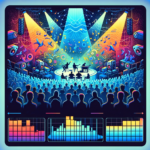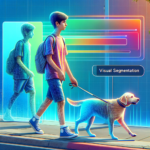Industries are being transformed by AI, which is capable of generating new efficiencies. It is important to carefully choose from the various available tools to ensure that they are aligned with the specific task at hand.
It is crucial to ensure that the AI tool we select is in line with our task objectives as the adoption of AI continues to grow across industries. Failing to do so can lead to underutilization of resources, suboptimal outcomes, and, in some instances, counterproductive results.
Designing a Pathway for Effective AI Tool Selection
The field of AI offers a broad range of tools capable of processing and analyzing different data types, including text, image, audio, and video. The selection of an AI tool is contingent upon a clear understanding of the task objective and the nature of the data at hand. This alignment ensures efficient utilization of AI capabilities and paves the way for successful outcomes.
- Understanding task objectives: Defining the task objective involves identifying the problem to solve, understanding the desired outcome, and outlining the key performance indicators.
- Recognizing data types: Different AI tools are designed to handle different data types. Text-based data is best handled by Natural Language Processing (NLP) tools, images by computer vision algorithms, audio data by speech recognition and processing tools, and video data often requires a combination of computer vision and audio processing algorithms.
AI Tools for Segmentation
AI tools for segmentation tasks are designed to divide extensive, detailed information into more manageable and distinct segments without losing the overarching context. From isolating specific sections in complex research articles to identifying distinct scenes within a long video, these tools employ advanced machine learning techniques to understand, interpret, and partition data across various formats and domains.
Text Segmentation
The most common form of text segmentation is sentence segmentation, also known as sentence boundary disambiguation, which is dividing a text into individual sentences. The goal is to enhance the understanding and processing of textual content.
Application: Sentence segmentation, Word tokenization, Topical segmentation, and Named entity recognition.
Other forms of text segmentation include word tokenization (dividing text into words), topical segmentation (dividing text into segments, each of which is about a different topic), and named entity recognition (identifying and classifying named entities in a text, such as persons, organizations, locations, expressions of times, quantities, percentages, etc.).These processes are crucial for data extraction, information retrieval, and content analysis.
🛠️ Tools: Textract, Google Cloud Natural Language API.
Image Segmentation
AI algorithms can not only detect and recognize objects but also understand where one object ends and another begins. This allows the algorithms to identify and separate different elements in the image, providing a more comprehensive summary.
Application: Object detection and Separation.
By identifying and separating different elements within an image, AI algorithms deliver a comprehensive breakdown, enhancing image processing for applications in various industries such as healthcare, automotive, and security.
🛠️ Tools: Clarifai, MonkeyLearn, AutoML Vision Edge.
Audio Segmentation
AI can distinguish and separate different voices in an audio file, even when they overlap. This can be very useful in crowded or noisy environments where multiple voices can often blend together.
Application: Voice separation in noisy environments.
Useful in crowded settings, AI models excel at discerning individual voices from a mix, essential for clear audio analysis, transcription, and enhanced listening experiences.
🛠️ Tools: Audacity, Descript, Spoken Layer.
Visual Segmentation
AI models have made possible not just static frame-by-frame segmentation but also understanding the temporal coherence between video frames. This means that the model doesn’t only understand individual frames but also the movement and transformation of objects from frame to frame (Video Object Segmentation (VOS)), making the segmentation more consistent and accurate over time.
Application: Video Object Segmentation (VOS).
Advanced AI models understand the temporal relationships between video frames, allowing for a precise breakdown of object movements, which is crucial for applications in motion analysis and video editing.
🛠️ Tools: DeepLabCut, SegTrack++, MaskTrack.




